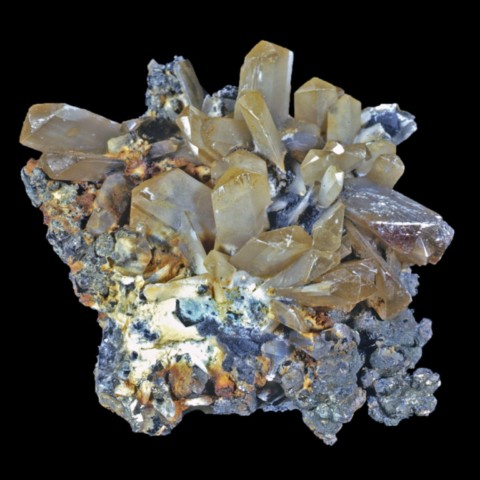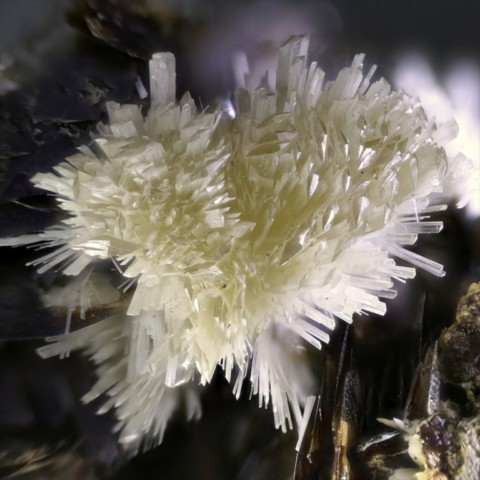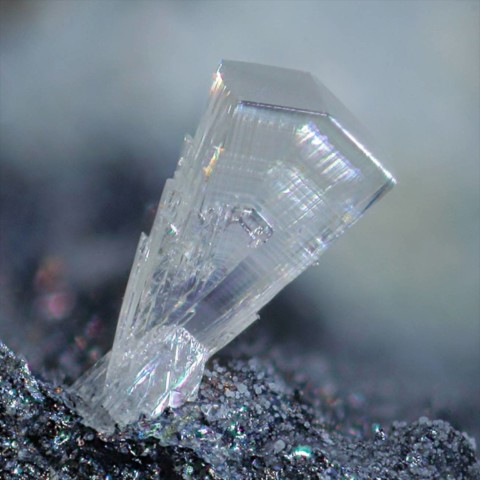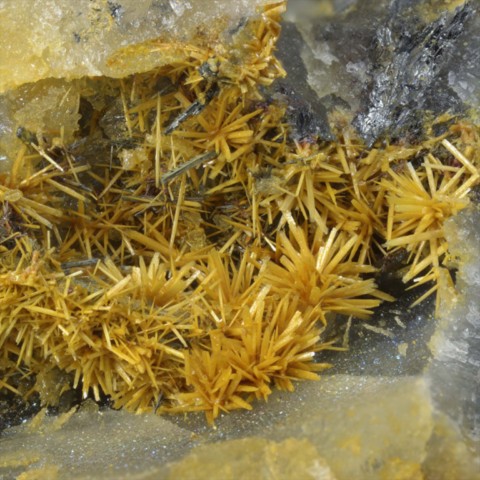VALENTINITE
Class : Oxides and hydroxides
Subclass : Oxides
Crystal system : Orthorhombic
Chemistry : Sb2O3
Rarity : Fairly common
Valentinite is one of the most common oxidation minerals in antimony deposits. It is found in the oxidized superficial parts of these deposits, along with its dimorph, senarmontite, stibiconite and cervantite. It was named in honor of the German Basilius Valentinus, a 15th century alchemist who was responsible for the first work on the properties of antimony. Valentinite forms acicular to prismatic crystals of white to yellowish color, with adamantine luster, pearly on the cleavages. But valentinite most often constitutes fibrous crusts on primary antimony minerals, sometimes pseudomorphing them completely, as well as fibroradiated masses. It is usually too rare to constitute an antimony ore.
Main photo : Valentinite from Xikuangshan, Hunan, China © Molin Lee
Valentinite in the World
Fakes and treatments
No fakes listed for this mineral species.
Hardness : 2.5 to 3
Density : 5,76
Fracture : Undetermined
Streak : White
TP : Transparent
RI : 2.180 to 2.350
Birefringence : 0.170
Optical character : Biaxial -
Pleochroism : None
Fluorescence : None
Solubility : Hydrochloric acid
Magnetism : NoneRadioactivity : None





